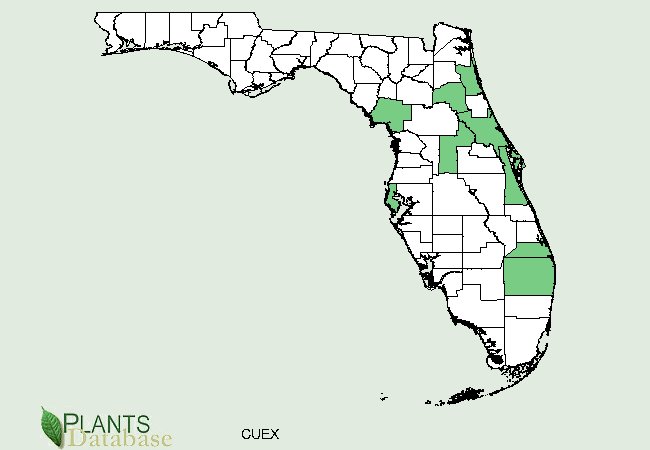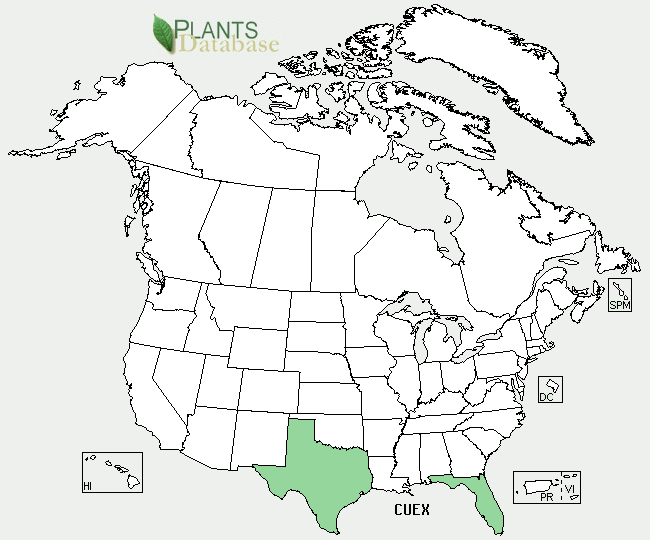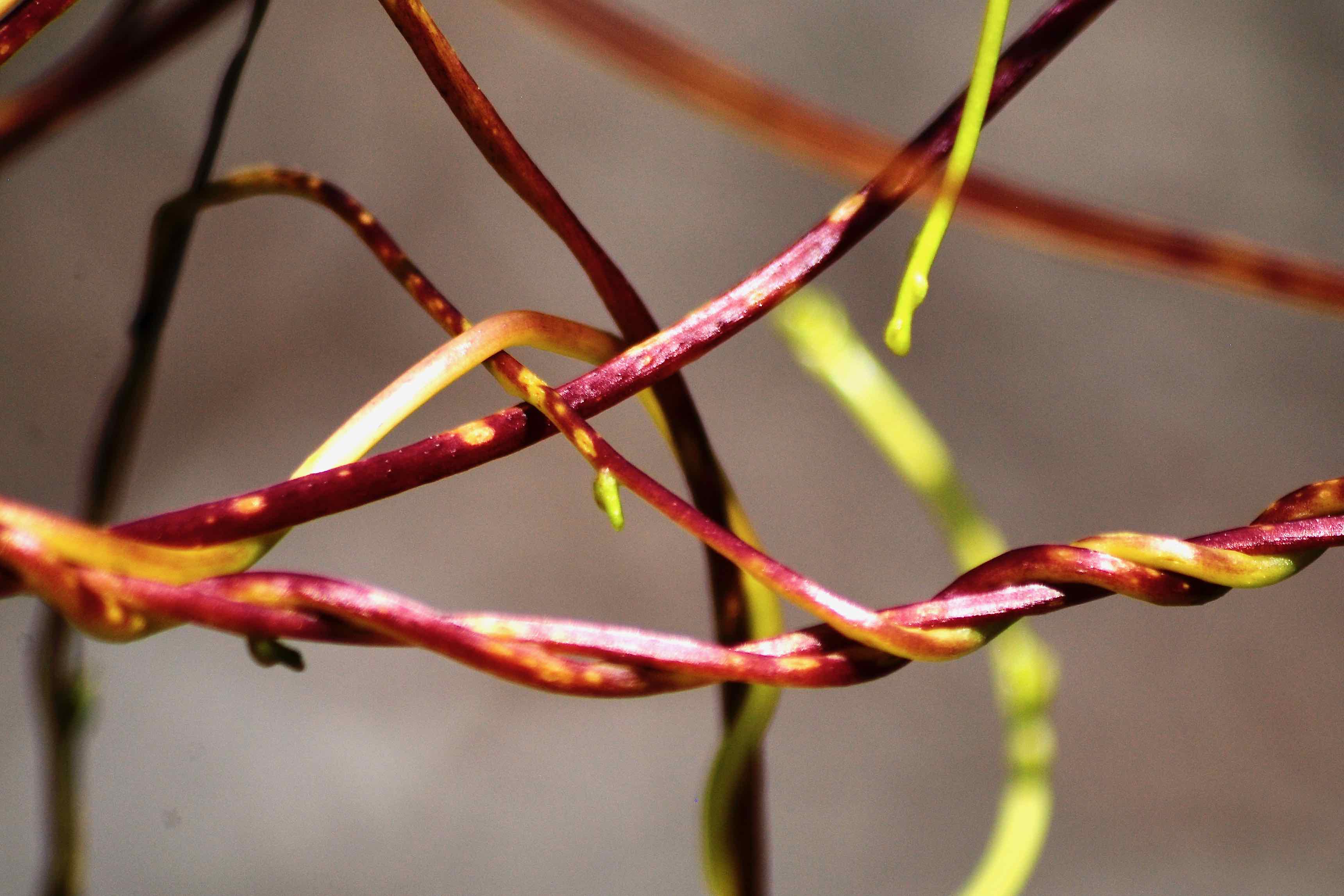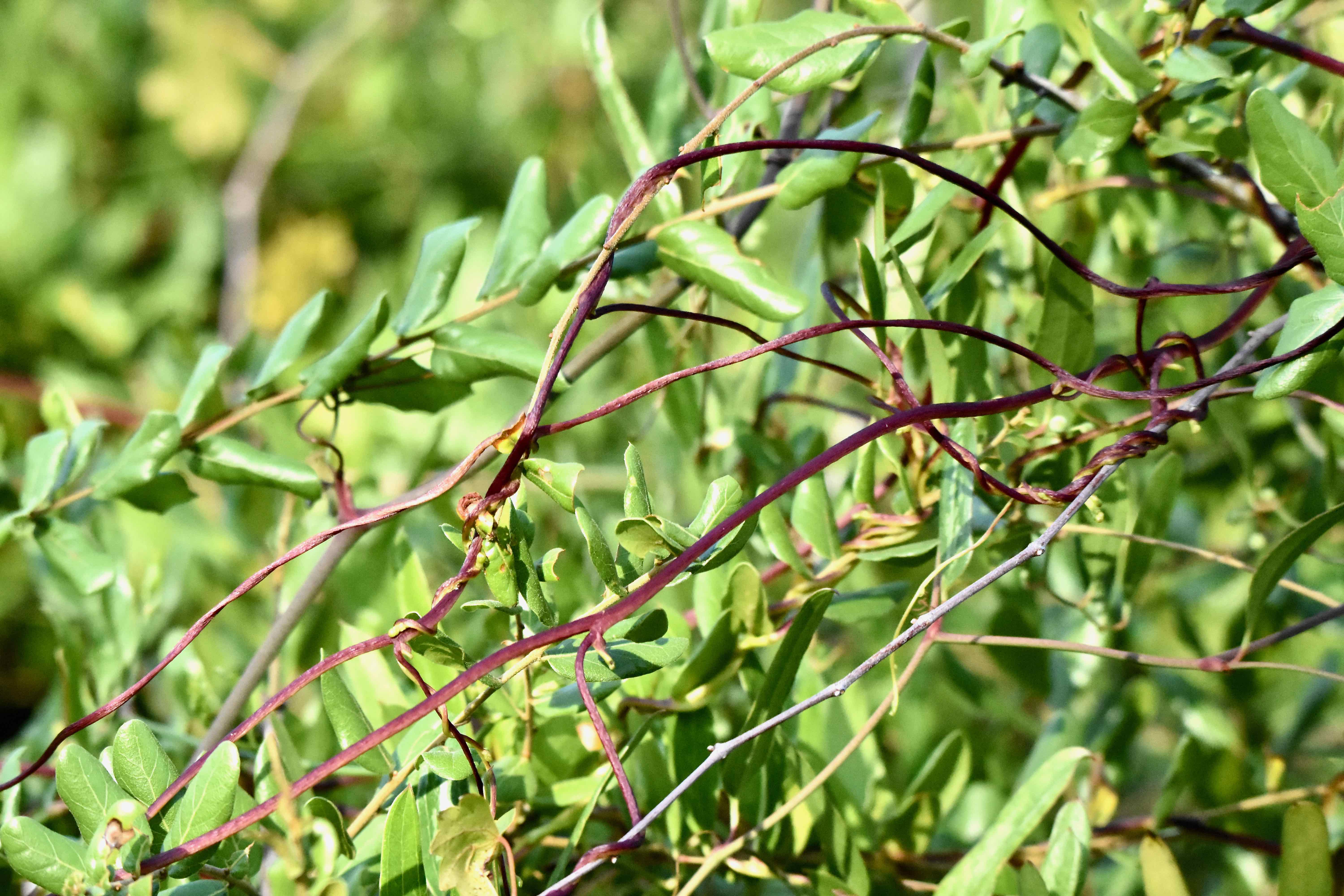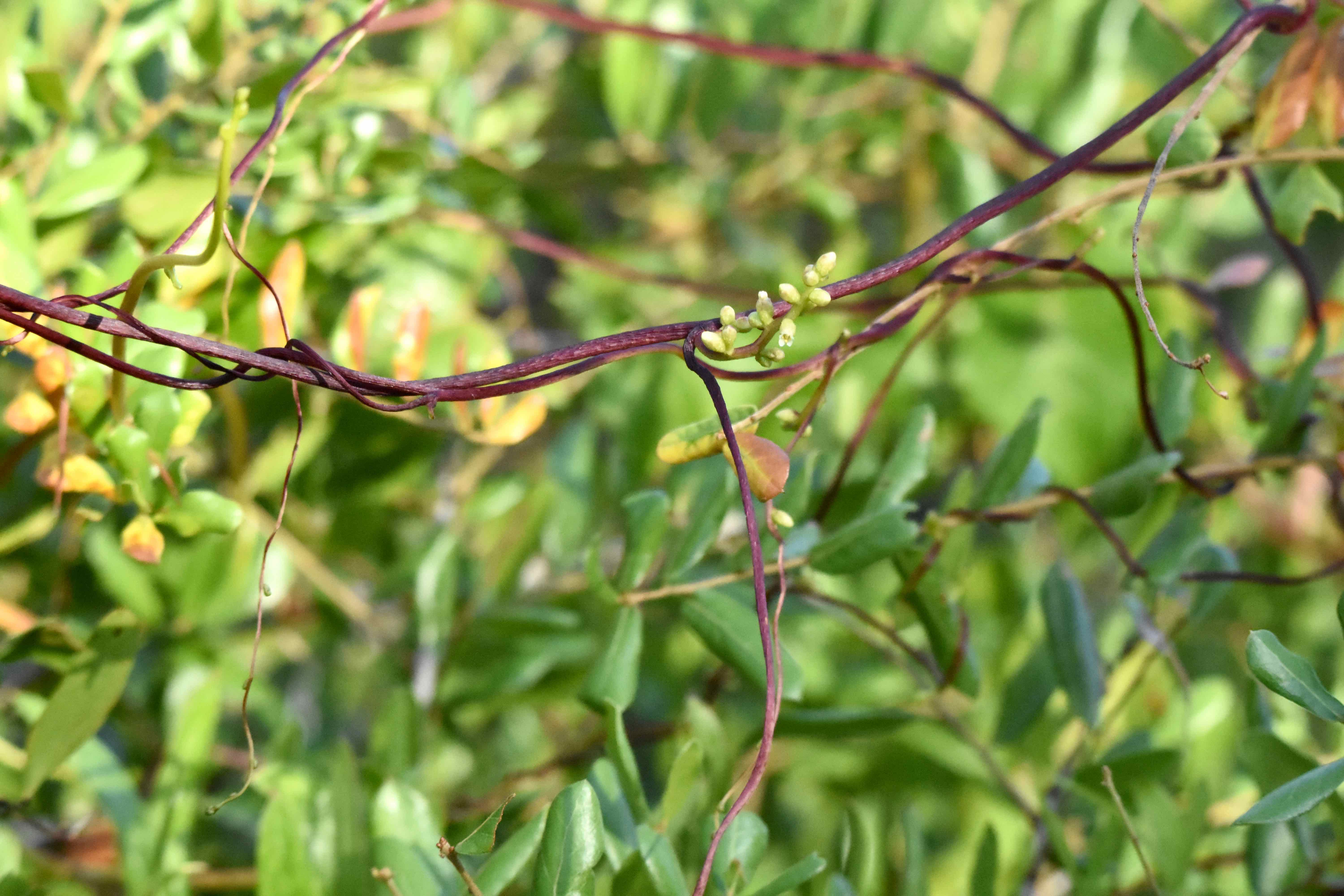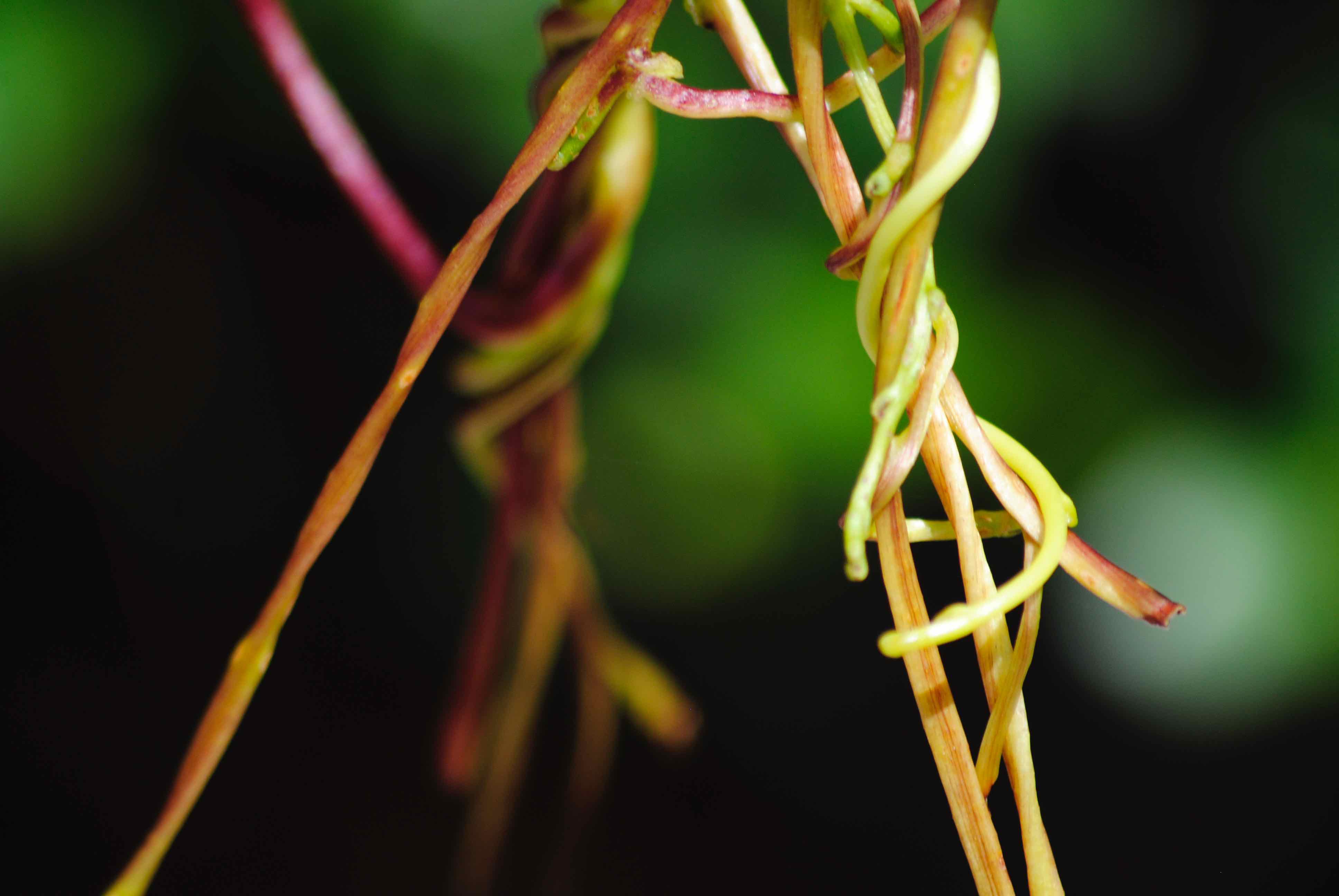
Tall dodder, photographed at Yamato Scrub Natural Area southern tract, Boca Raton, Palm Beach County, in August 2014.
Yes, this is a plant and not a bad wiring job. Tall dodder, Cuscuta exaltata, is one of the strangest and most complex plants native to Florida. Also one of the rarest.
It's a full-fledged parasite, similar in appearance to love vine, Cassytha filiformis. It is a sparsely leafed vine that wraps around itself and a host, which it uses not only for support but as a source of nutrients. It essentially fuses itself to its host. From what we've seen, it doesn't get quite as dense as love vine can be, and the stems are red and green to love vine's yellow-orange. Tall dodder's stems are also thicker. The two plants are in different families.
Cuscuta is a large group of plants, all parasites and all called dodders, found in temperate and subtropical climes around the globe.They're largely viewed as pests, because of the damage some can do to crops. But only a relative handful of the 200 species are problem plants. The negative view of dodders goes back centuries, however. In medieval Europe, grape vines attacked by a dodder were considered evil transformations.
On the other hand, your friendly neighborhood medieval herbalist would have prescribed dodder for any number of conditions, including to "purge the head of evil humors." It was considered useful for diseases of the head and brains and trembling of the heart. Why? Dodder falls under the sign of Saturn, of course. In Asia, dodders, particularly Cuscuta chinensis, has been used in folk medicine for kidney problems, as a pain reliever, anti-inflammatory and as an aphrodisiac. Some research suggests it might be useful for treating postmenopausal osteoporosis.
Dodder is readily available on the internet, but scientists have done little research into their potential benefits or side effects. In any case, we haven't seen any mention of tall dodder in any scientific papers as having medicinal value.
Tall dodder is extremely rare in South Florida, believed to exist only in six natural areas in Palm Beach and Martin counties (verified in four, presumed in two others), according to the Institute for Regional Conservation. In fact, IRC calls it critically imperiled. Texas is the only other place where it's found. On the other hand, the U,S. Department of Agriculture considers all cuscata species to be noxious weeds, and 11 states, including Florida, do likewise. Florida, however, makes exceptions for native cuscata species, including tall dodder. There is little apparent resemblance, but tall dodder is a member of Convolvulaceae, or morning-glory family. It does produce flowers and yield small, berry-like fruit.
Tall dodder, also known as tree dodder, has little or no chlorophyll, the magical compound that allows most plants to produce their own food from carbon dioxide and water, a process called photosynthesis. Tall dodder has got to get nutrients somewhere, so it steals them.
Tall dodder doesn't just climbs onto its host; it penetrates its tissue and takes what it needs through an appendage called a haustorium. In the process, it's able to fool the host's defenses and the two plants appear to fuse together much like a graft. One dodder might have multiple hosts. They'll even form haustoria on itself to make transporting nutrients more efficient.
Seedlings grow in the ground, looking figuratively for a host, usually a scrub oak. The young plants have roots and are able to sustain themselves for a time but they have a clock ticking and need to latch onto a host quickly. Dodder seedlings have the ability to "sense" whether a potential host is nearby.
Once a seedling attaches to the tree, it detaches from the ground, living entirely off the unfortunate victim. Tall dodder can attack crops, but it's so rare in Florida that it's not considered a serious threat. Other dodders in other parts of the world are able to reduce crop yields by more than half.
It is an annual plant, and the IRC says tall dodder can be ephemeral, appearing one season, disappearing the next only to reappear years later. Its survival strategy might explain that.
Odds are stacked against tall dodder seedlings finding a host and making it to maturity. But the plant has several things going for it: numbers and time. A plant can produce as many 16,000 seeds in a season; if conditions aren't right for sprouting, they can remain dormant for as long as 60 years.
We found tall dodder growing on several scrub oaks in the Yamato Scrub Natural Area in patch we're guessing to be 20 by 20 feet. Not only had it taken over the oaks, it was creeping into saw palmetto and and nearby pines. It even wrapped itself around some greenbriar growing on the oaks. We visited the same site a year later and found no hint of tall dodder. We visited again in spring 2018, and there it was again.
Fun fact: As late as 1831, Europeans blamed dodder infestations on the appearance of a comet. Second fun fact: while love vine and tall dodder are in different families, their genus names, Cassytha and Cuscuta respectively, originate from the same word.
Note: In updating this page, we found that both the U.S. Department of Agriculture and the Lady Bird Johnson Wildflower Center list tall dodder as a member of Cuscutaceae, the dodder family, rather than as a member of Convolvulaceae. We've seen some reliable sources say that the inclusion of dodders in Colvolvulaceae was older and since revised to Cuscutaceae, and we've seen reliable sources say the opposite. However, ITIS, formally known as the Interagency Taxonomic Information Service, presently lists dodders as members of Convolvulaceae, so we'll stick with tall dodder as a member of the morning glory family.
Yamato Scrub Natural Area
Click on photo for larger image
U.S. Department of Agriculture Distribution Maps
